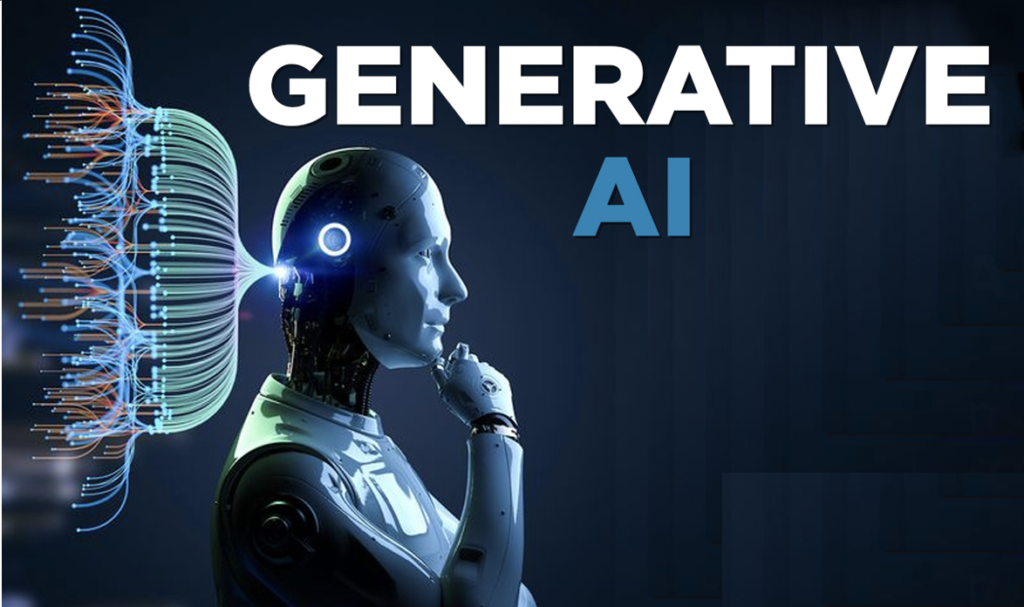Introduction to Generative AI Technology
Generative AI refers to a type of artificial intelligence that can create new content, such as text, images, music, and even code. This technology uses algorithms to learn from existing data and generate new outputs that mimic the original data. Recent advancements in generative AI technology have made it more powerful and accessible, leading to exciting applications across various fields. However, these advancements also bring about significant cybersecurity risks that organizations and individuals must be aware of.
Understanding the Risks of Generative AI in Cybersecurity
As generative AI technology evolves, so do the methods cybercriminals use to exploit it. Here are some key areas where emerging risks are becoming apparent:
Deepfakes and False Data:
The production of “deepfakes,” or lifelike artificial intelligence-generated fake films or audio files, is one of the most alarming uses of generative AI. Deepfakes can be used for public opinion manipulation, disseminating false information, and persona impersonation. In a deepfake video, for instance, a public figure can be heard saying something they have never said, harming their reputation or having an impact on political outcomes.
Attacks by Phishing
By producing incredibly realistic-looking emails or messages, generative AI can improve phishing attempts. With the assistance of this technology, fraudsters can create tailored messages that deceive recipients into divulging private information such as bank account numbers or passwords. These phishing attacks are harder to identify since they can produce customised information.
Malware Automated Code Generation
The possibility for generative AI to be used to create viruses is another issue. Cybercriminals might use generative models to generate malicious code automatically that targets particular software vulnerabilities. Attackers may expand their operations swiftly and effectively thanks to this automation, which makes it more difficult for cybersecurity teams to stay up to date.
Data Poisoning Attacks
Data poisoning involves manipulating the training data used by machine learning models to produce incorrect outputs. With generative AI systems relying heavily on large datasets for training, attackers could introduce false data into these datasets intentionally. This could lead to compromised models that generate harmful or misleading content.
Social Engineering Tactics
Generative AI can also be employed in social engineering tactics where attackers manipulate human psychology to gain access to sensitive information or systems. By generating realistic scenarios or conversations, cybercriminals can deceive individuals into believing they are interacting with trusted sources.
Mitigating Risks Associated with Generative AI
To address the emerging risks posed by generative AI technology in cybersecurity, organizations need proactive strategies:
Knowledge and Consciousness
Employers should fund employee education initiatives that educate staff members about the dangers of generative AI technology, such as deepfakes and phishing scams. Campaigns to raise awareness can assist people in spotting questionable communications and avoiding falling for con artists.
Advanced Detection Tools
Putting Advanced Detection Tools Into Practice More accurately than with just traditional techniques, deepfakes and other types of modified information can be detected by using sophisticated detection tools driven by machine learning. These tools examine media files for patterns and discrepancies that might point to manipulation.
Strengthening Authentication Protocols
Implementing multi-factor authentication (MFA) adds an extra layer of security when accessing sensitive accounts or systems. Even if an attacker manages to obtain login credentials through phishing techniques enhanced by generative AI, MFA can prevent unauthorized access.
Frequent evaluations of security
Regular security audits assist companies in locating weaknesses in their systems before hackers can use generative AI technology to take advantage of them for ill intent.
Industry-to-Industry Collaboration
Industry cooperation is necessary to properly share information regarding new risks associated with generative AI technology in cybersecurity settings. This includes exchanging best practices across businesses dealing with comparable issues.
The Future Landscape of Cybersecurity with Generative AI
As we look ahead at how generative AI will continue evolving alongside cybersecurity threats over time:
- The arms race between defenders (cybersecurity professionals) and attackers (cybercriminals) will likely intensify as both sides leverage advanced technologies.
- New regulations may emerge aimed at governing the ethical use of generative AIs while addressing concerns surrounding privacy rights.
- Organizations must remain vigilant regarding ongoing developments within this space since staying informed will play a crucial role in mitigating potential risks effectively moving forward.
Conclusion: Navigating Emerging Risks
In conclusion, while generative AI technology offers numerous benefits across various sectors—from enhancing creativity through art generation capabilities—to improving efficiency through automated processes—it also poses significant cybersecurity risks that cannot be ignored any longer! As we embrace these advancements responsibly without compromising safety standards; understanding how best navigate potential pitfalls becomes paramount!
By prioritizing education around recognizing threats posed by such technologies combined with implementing robust security measures; businesses stand better prepared against future challenges arising from rapid technological progressions within our digital landscape today!
